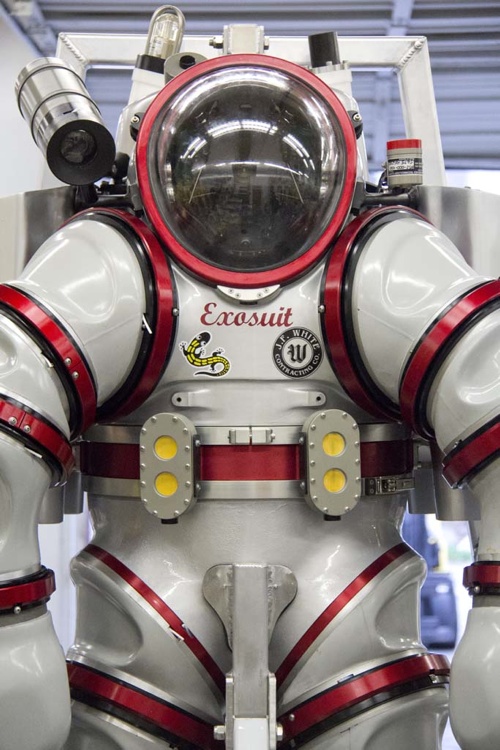New Exosuit Allows Deeper Diving
A new diving suit will allow oceanographers to explore the underwater world up to four times deeper than today’s most advanced compressed air gear. In addition, the new suit will allow divers to stay underwater for hours, so they can explore marine life up close as never before.
The so-called Exosuit is made of aluminum alloy, stands about two meters tall and weighs more than 240 kilograms. It is designed to protect divers below 300 meters, where the pressure is 30 times greater than on the surface.
The Exosuit, unveiled at the American Museum of Natural History in New York, has 18 rotary joints, providing better freedom of movement than similar suits.
Still, says Michael Lombardi, the museum’s diving safety officer who tested the suit, it takes some time to get used to.
“It takes an effort to find a comfortable spot in the suit, but at the same time you don’t feel claustrophobic. I get that question all the time because it’s so tight,” said Lombardi.
The Exosuit has four 1.6-horsepower water-jet thrusters, controlled by pressure-sensitive pads in the boots. The oxygen supply allows the diver to stay underwater for hours, with up to 50 hours of life support.
A special tether will provide contact with the surface and send high-quality video of underwater organisms.
Scientists are especially excited about the possibility of studying bioluminescent and biofluorescent animals in their own habitat.
Curator of the museum’s Department of Ichthyology, John Sparks, says that people are amazed to learn that there are a lot of undiscovered species in the ocean depths.
“Because everyone thinks everything is described, but you hit an area like a deep coral reef or this open water environment and can collect out there, we’re going to find hundreds of new species,” said Sparks.
It took 14 years for the Canadian firm Nuytco Research Ltd. to design and construct a single Exosuit, at the cost of more than $1 million. It is scheduled to be tested in July, about 160 kilometers off the coast of New England.


